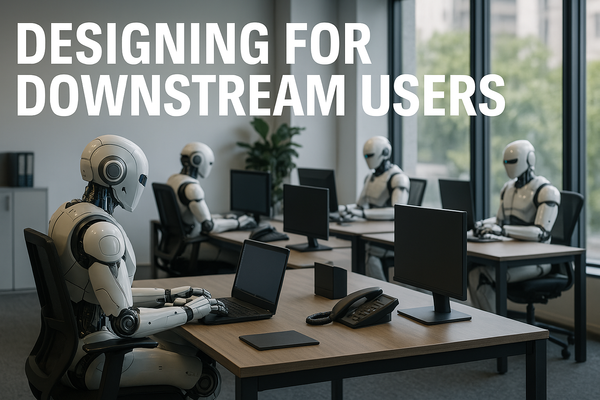Unlocking the Power of AI: A Product Led View

In 1997, chess champion Garry Kasparov took on IBM’s supercomputer, Deep Blue. It was a match that symbolized the rising potential of artificial intelligence (AI). After Kasparov won the first round, many assumed humans still held the upper hand. But then Deep Blue came back to win, marking a new era where machines could compete with, and even beat, human minds.
For today’s product leaders, AI is more than just a fascinating technology—it’s a tool that can change the way we build and improve products. From personalized recommendations to virtual assistants, AI is transforming how we engage with users. But to use it well, you need to understand how it works and where it fits best.
Let’s take a closer look at the two key technologies in AI today: machine learning (ML) and large language models (LLMs).
Getting Started: Machine Learning in Action
At its core, machine learning is about teaching systems to learn from data. Instead of manually programming every response, we give the system examples and let it figure out patterns on its own. A good example is Netflix’s recommendation engine. In 2006, Netflix offered a million-dollar prize to anyone who could improve its recommendation algorithm. The result? A smarter system that understands user preferences and suggests shows they’ll likely enjoy.
For product leaders, machine learning opens up new ways to tailor user experiences. Whether it’s recommending music on Spotify or spotting suspicious transactions in banking apps, ML helps products get better as they collect more data.
That said, not every problem needs machine learning. Sometimes, the challenge is more complex, requiring a more advanced approach—enter large language models (LLMs).
What Are LLMs, and Why Do They Matter?
In 2019, OpenAI’s GPT-2 showed the world just how far AI had come. This model could write essays, generate conversations, and even complete programming tasks with human-like accuracy. LLMs are designed to understand and generate language in ways that feel natural to us.
One standout example of an LLM in action is GitHub Copilot. By analyzing vast amounts of publicly available code, Copilot helps developers by suggesting code snippets as they type. This isn’t just about speeding up the process; it’s about allowing developers to focus on the more creative aspects of problem-solving while Copilot handles the repetitive tasks.
But LLMs aren’t just for coding. They power everything from chatbots to content generators. If you’ve ever used an AI assistant like Siri or Alexa, you’ve already experienced the early stages of what LLMs can do.
Machine Learning or LLMs? When to Use Which
As a product leader, it’s crucial to know when to use a simpler machine learning model versus a more complex LLM. Spotify’s recommendation engine is a great example of traditional machine learning at work. It doesn’t need deep contextual understanding; instead, it analyzes your listening habits to predict what you might enjoy next.
On the other hand, Grammarly uses an LLM to improve writing in real-time. This requires more than pattern recognition—it needs to understand the meaning behind words and suggest improvements in grammar, clarity, and tone. These deeper insights make it an ideal application for an LLM.
The key takeaway? Use machine learning for tasks where the patterns are clear and data driven. If your product requires a deeper understanding of language or complex reasoning, that’s where LLMs shine.
Looking Back: What History Teaches Us About AI
AI may feel cutting-edge, but its roots stretch back decades. In the 1950s, Alan Turing—often considered the father of modern computing—proposed the Turing Test to measure a machine’s ability to mimic human behavior. Back then, AI was focused on simple tasks through pre-programmed rules.
Fast forward to today, and AI systems are driven by data. Instead of following set instructions, they learn from the vast amounts of information they process. This shift from rule-based systems to learning-based systems is why AI has become so powerful.
For product leaders, this evolution shows that AI develops in stages. We’ve moved from systems that follow instructions to ones that learn from data. The next phase? Systems that anticipate needs, can acquire new experiences of the world and make proactive decisions based on complex models.
Bringing AI into Your Product Strategy
So, how do you bring AI into your product? It starts by asking the right questions:
- Where are your users struggling, and how could AI make things easier?
- Is there a way to personalize your product using data-driven insights?
- Could an LLM help automate tasks or improve customer interactions?
Start with smaller, well-defined AI use cases. Intercom, for example, added an AI-powered chatbot to handle routine customer inquiries. By doing this, they freed up their human agents to tackle more complex issues, improving response times and overall customer satisfaction.
At the same time, make sure your data and engineering teams are on the same page. Many AI projects fail because there’s a gap between business goals and technical execution. Successful collaborations—like Spotify’s Discover Weekly—happen when product and data science teams work together from the beginning.
Lastly, it’s essential to think about the ethical implications. AI is powerful, but it can also go wrong. Consider Amazon’s AI hiring tool, which was found to be biased against women. This happened because the tool was trained on historical data that reflected biased hiring practices. As a product leader, you have a responsibility to ensure your AI is trained on diverse, representative data to avoid reinforcing biases while strategically implementing other governance models such as explainability audits.
Final Thoughts: AI as a Product Leader’s Secret Weapon
AI is a powerful tool, but it’s just that—a tool. It’s up to you to figure out where it fits in your product strategy and how it can enhance your user’s experience. Machine learning can make products smarter, while large language models open up new possibilities for understanding and responding to users.
The key is to start small, collaborate with your technical teams, and always keep your users at the center of your AI decisions. As you continue to explore AI, you’ll find that it’s not just about following trends; it’s about building better products that truly understand and serve the needs of your customers.
Next in the series: Adding Value Without Complexity—How to Identify AI Use Cases that Make a Difference.
Additional Resources:
Courses: “AI for Everyone” by Andrew Ng, “Natural Language Processing with Deep Learning” (Coursera/Stanford).
Books: “Deep Learning” by Ian Goodfellow, “Speech and Language Processing” by Jurafsky and Martin.
AI News: Follow AI research papers, conferences (NeurIPS, ICML), and communities (paperswithcode.com).



